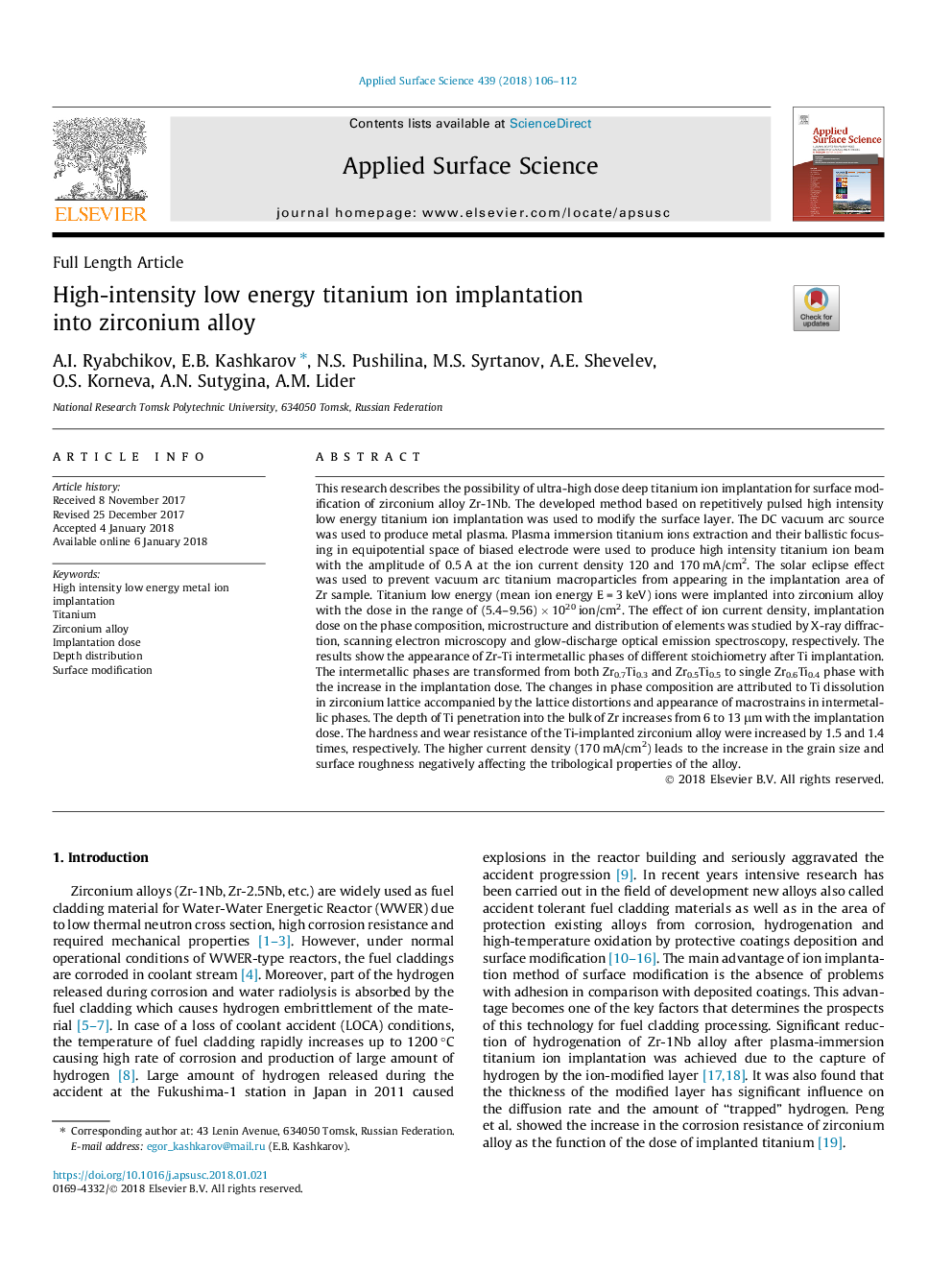| Article ID | Journal | Published Year | Pages | File Type |
|---|---|---|---|---|
| 7835188 | Applied Surface Science | 2018 | 7 Pages |
Abstract
This research describes the possibility of ultra-high dose deep titanium ion implantation for surface modification of zirconium alloy Zr-1Nb. The developed method based on repetitively pulsed high intensity low energy titanium ion implantation was used to modify the surface layer. The DC vacuum arc source was used to produce metal plasma. Plasma immersion titanium ions extraction and their ballistic focusing in equipotential space of biased electrode were used to produce high intensity titanium ion beam with the amplitude of 0.5â¯A at the ion current density 120 and 170â¯mA/cm2. The solar eclipse effect was used to prevent vacuum arc titanium macroparticles from appearing in the implantation area of Zr sample. Titanium low energy (mean ion energy Eâ¯=â¯3â¯keV) ions were implanted into zirconium alloy with the dose in the range of (5.4-9.56)â¯Ãâ¯1020â¯ion/cm2. The effect of ion current density, implantation dose on the phase composition, microstructure and distribution of elements was studied by X-ray diffraction, scanning electron microscopy and glow-discharge optical emission spectroscopy, respectively. The results show the appearance of Zr-Ti intermetallic phases of different stoichiometry after Ti implantation. The intermetallic phases are transformed from both Zr0.7Ti0.3 and Zr0.5Ti0.5 to single Zr0.6Ti0.4 phase with the increase in the implantation dose. The changes in phase composition are attributed to Ti dissolution in zirconium lattice accompanied by the lattice distortions and appearance of macrostrains in intermetallic phases. The depth of Ti penetration into the bulk of Zr increases from 6 to 13â¯Î¼m with the implantation dose. The hardness and wear resistance of the Ti-implanted zirconium alloy were increased by 1.5 and 1.4 times, respectively. The higher current density (170â¯mA/cm2) leads to the increase in the grain size and surface roughness negatively affecting the tribological properties of the alloy.
Related Topics
Physical Sciences and Engineering
Chemistry
Physical and Theoretical Chemistry
Authors
A.I. Ryabchikov, E.B. Kashkarov, N.S. Pushilina, M.S. Syrtanov, A.E. Shevelev, O.S. Korneva, A.N. Sutygina, A.M. Lider,
